This week is OCP Summit 2021, and it also marks the week before Supercomputing 2021. As a result, we are getting many announcements. Kioxia has two of them. First, the Kioxia CD7 is being launched. Second, the Kioxia XD6 is now in production. While both support EDSFF, the CD7 has an extra interesting feature, it is a PCIe Gen5 SSD.
What is the Deal with EDSFF?
As a quick primer, you may have seen the Kioxia XD6 in our piece E1 and E3 EDSFF to Take Over from M.2 and 2.5 in SSDs. Here is the accompanying video:
The big deal here is that server vendors are able to fit more drives into chassis with EDSFF by using a form factor designed for better space and cooling utilization.
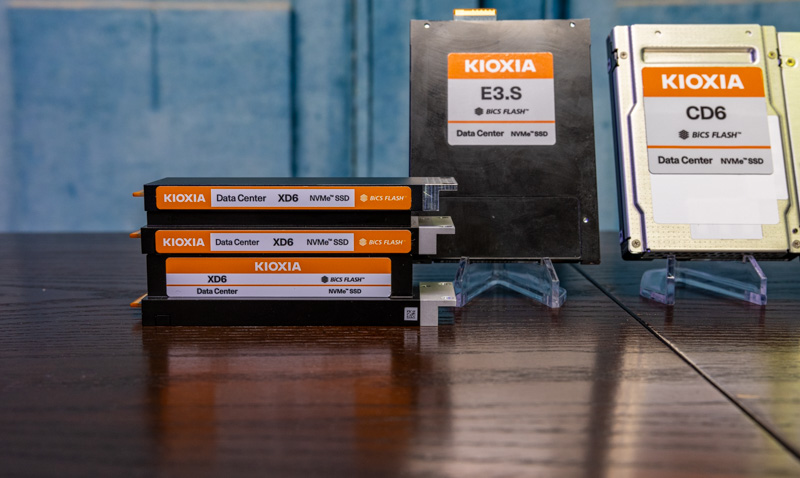
The E1.S drives are the smaller drives, primarily for 1U systems, while the E3.S drives are taller, more for 2U chassis. The first announcement today is that the XD6 pictured in our piece from earlier this year is now shipping as a PCIe Gen4 drive.
Kioxia CD7 PCIe Gen5 NVMe SSD
The Kioxia CD7 is really interesting. First, it is an E3.S 7.5MM (1T) NVMe SSD. If one looks closely at the photos, the CD7 looks a lot like the drive labeled “E3.S” in the photo above.
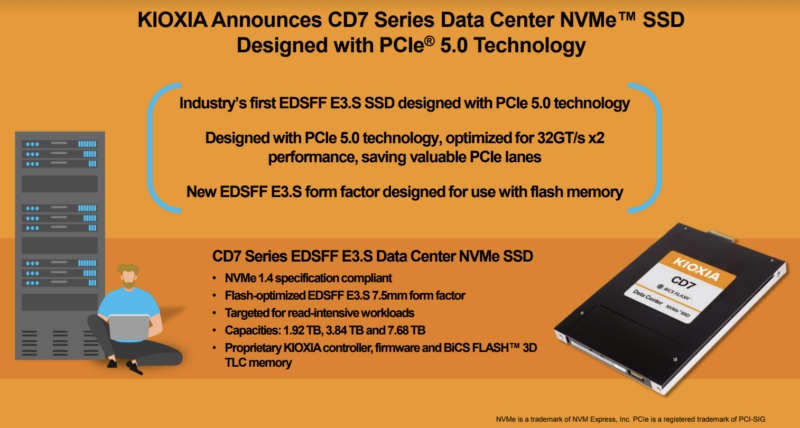
While this has many of the features such as power loss protection (PLP) and Sanitize Instant Erase (SIE) it also has a feature we should discuss. Specifically, the drive is a PCIe Gen5 x4 drive, but it is being marketed as optimized for PCIe Gen5 x2 performance. Effectively, while using existing NAND instead of building a drive that is focused on delivering 2x the performance per device of the PCIe Gen4 SSDs shipping today, it is instead using half the lanes. Using two lanes instead of four means one can use twice as many drives off of a set number of CPU PCIe Gen5 lanes. This is a big deal and as we move into the next-generation of server CPUs, this is going to be a key discussion topic.
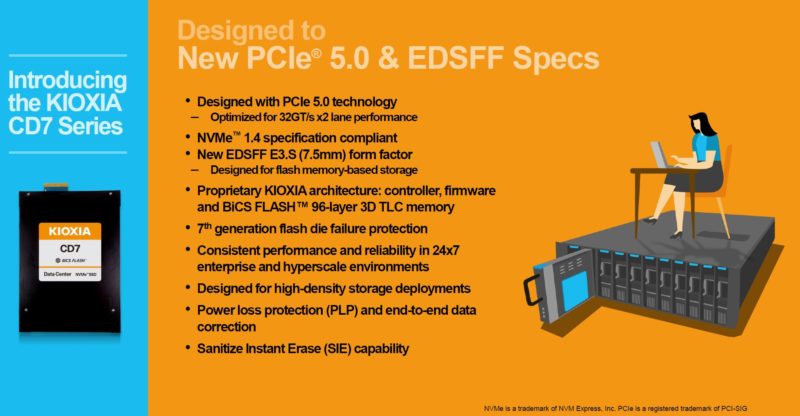
We discussed this in our earlier EDSFF piece, but the E3.S and 2T variant (2T is basically twice the thickness) allow for better power and cooling than existing U.2/ U.3 2.5″ NVMe SSDs have in 15mm casings.
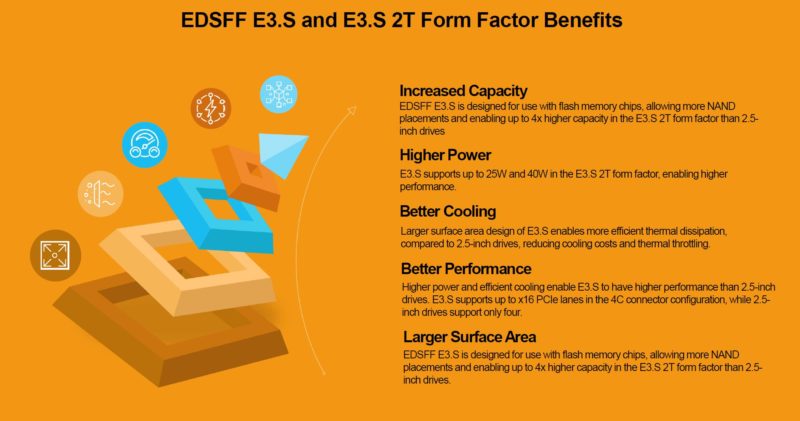
A lot of the marketing materials you are likely to see around E3.S and E3.S 2T, as well as E1.S / E1.L for that matter, are going to be focused on power and cooling. Still, the connector was designed to support higher-speed interfaces including PCIe Gen5 x16.
Final Words
We still have some time between now and when we get PCIe Gen5 servers. We have started to see Intel 12th Gen Core Alder Lake and platforms support PCIe Gen5, but we are still a few months from seeing them on the server side. Still, the Kioxia CD7 PCIe Gen5 x2 optimization shows that hyper-scalers and server OEMs are thinking about more than just getting the maximum per-drive bandwidth and instead are thinking about optimizing entire server platforms with the right number of drives for a given performance, capacity, cost, and reliability range.

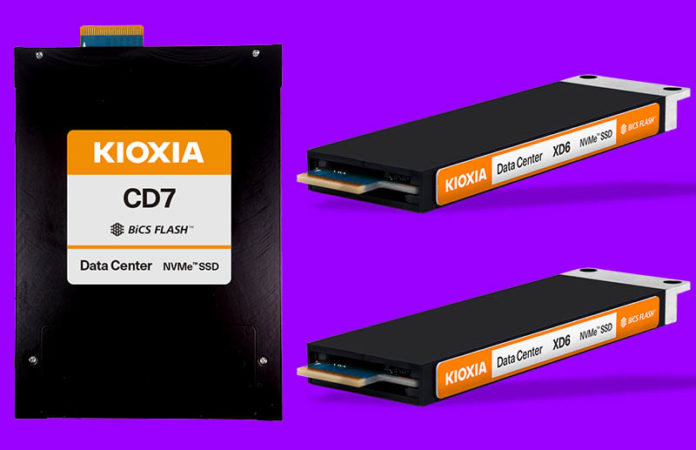



with many options of edsff it is getting more and more confusing to me.
e1s, e3s, e1L, e3s2t….it is like the usb-mess rigth now.